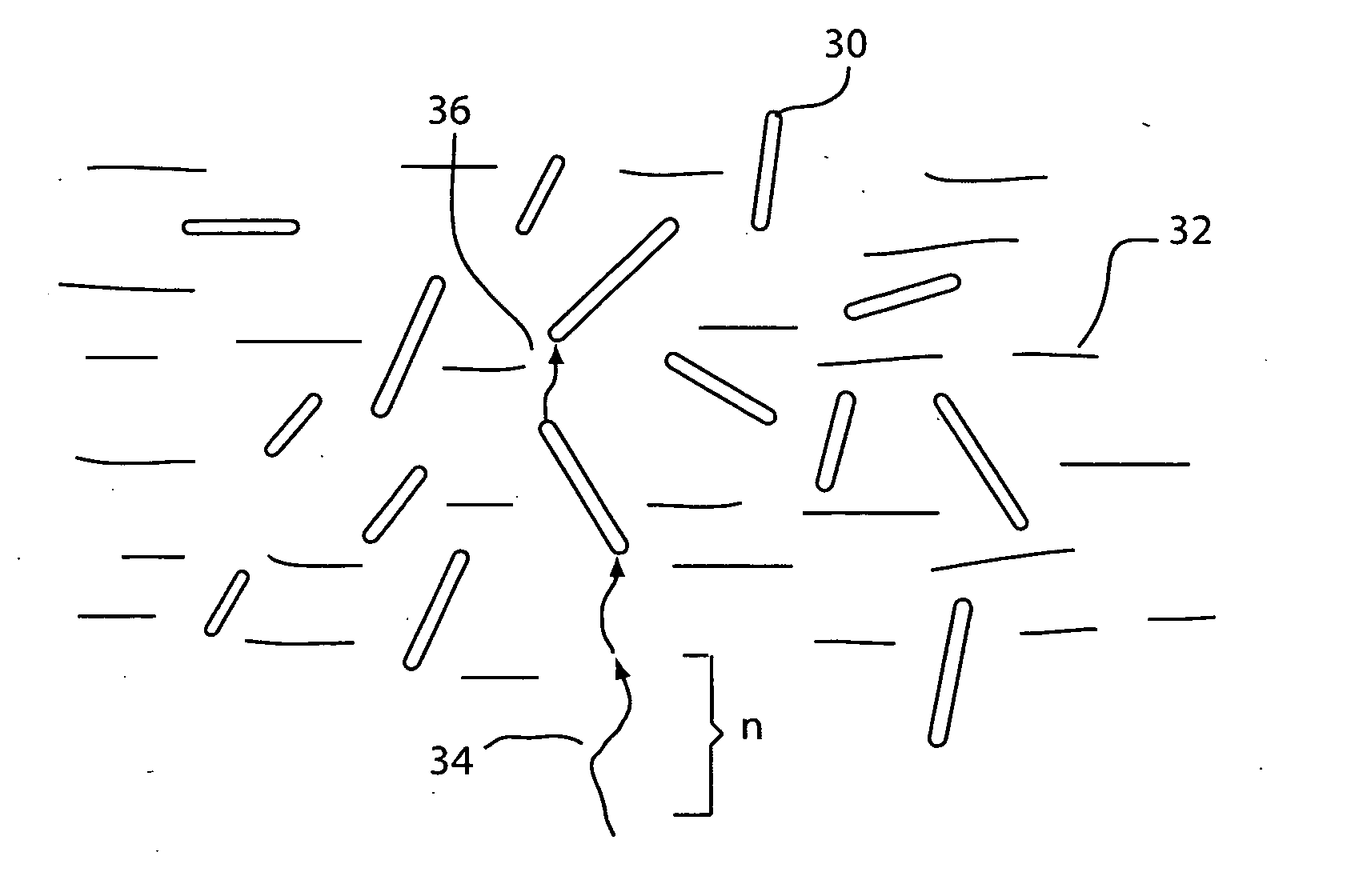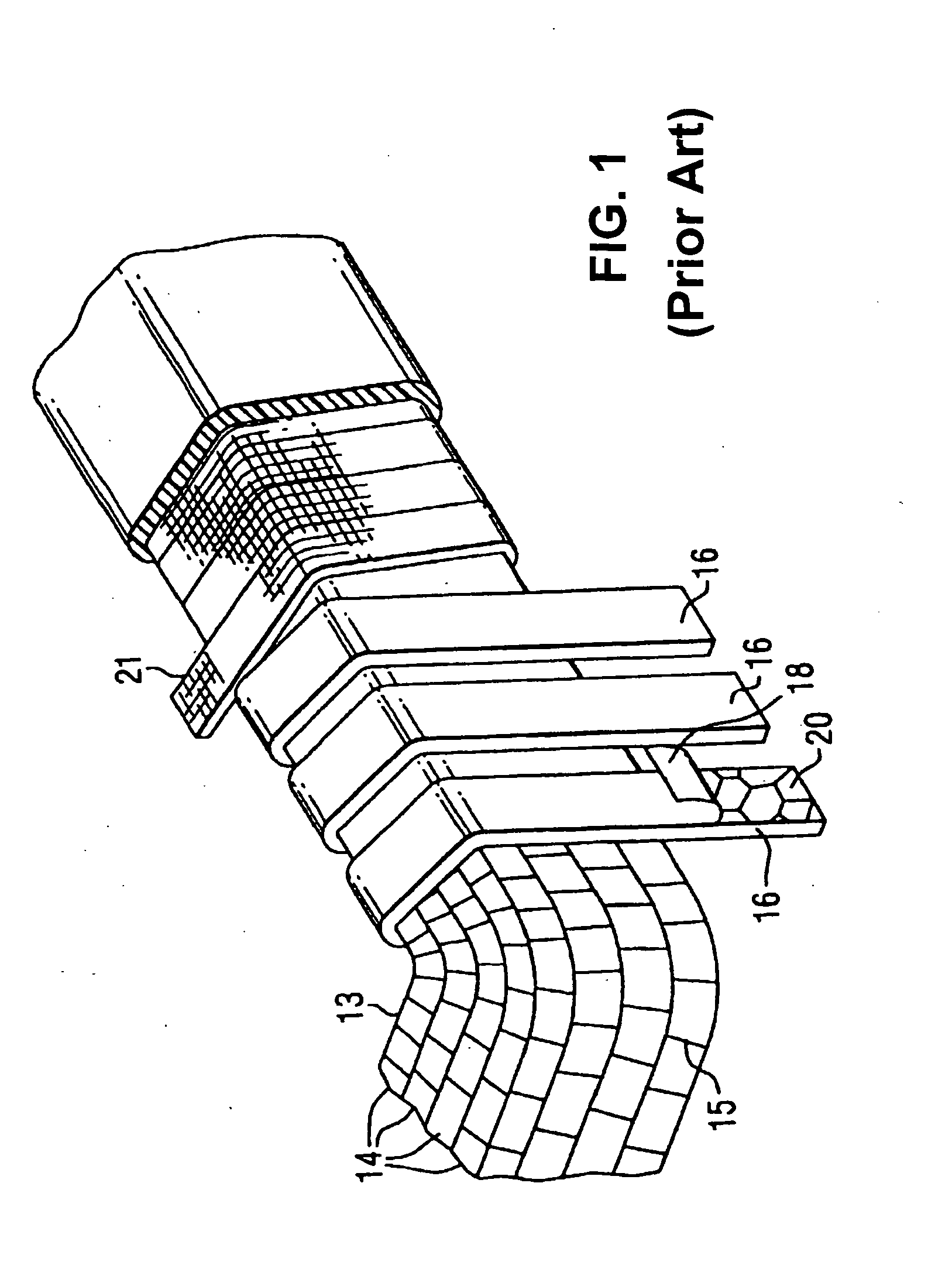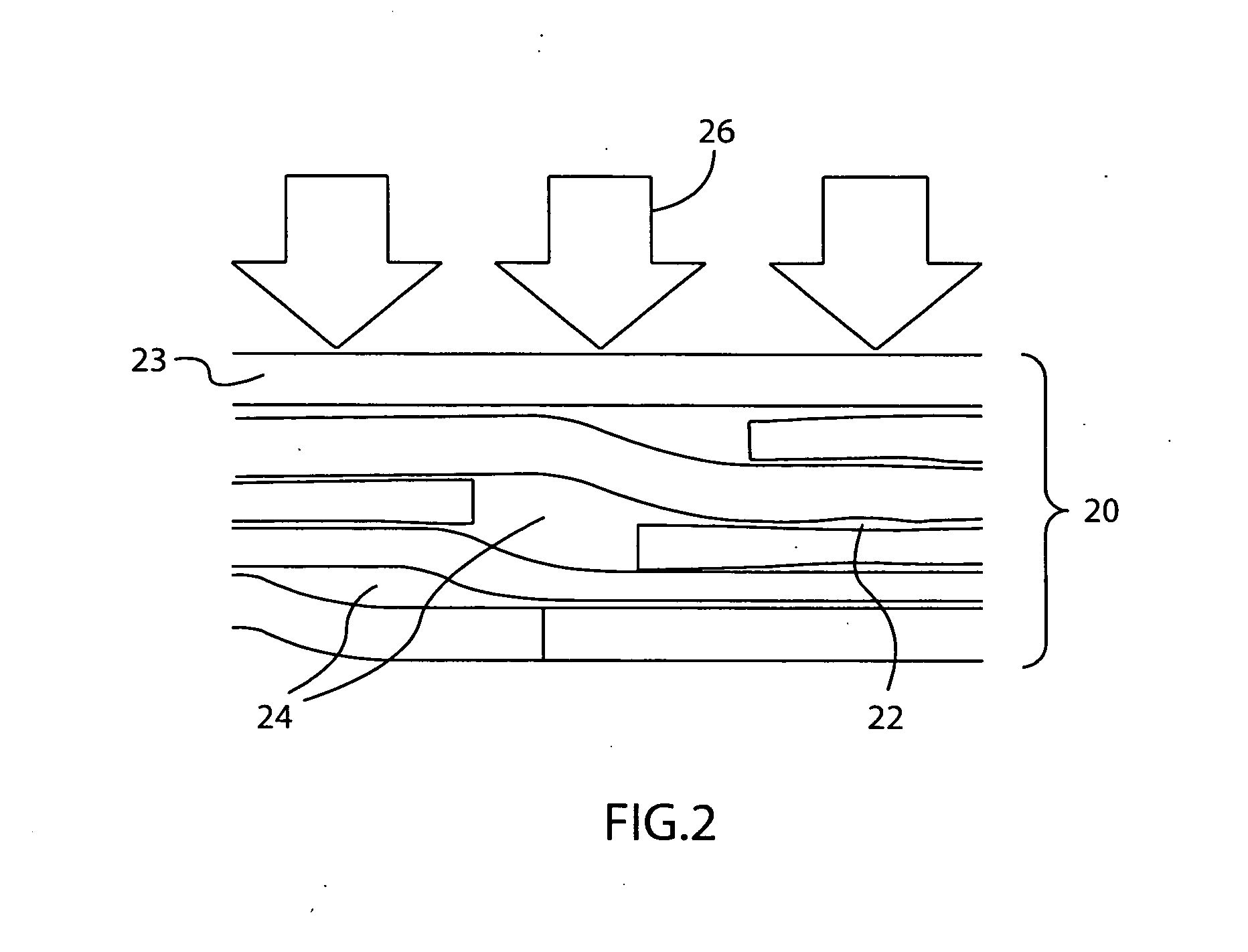Treatment of micropores in mica materials
- Summary
- Abstract
- Description
- Claims
- Application Information
AI Technical Summary
Benefits of technology
Problems solved by technology
Method used
Image
Examples
Embodiment Construction
[0023] The present invention provides for a system and method of treating the interconnecting micro pores within a mica paper (matrix) with a silane, allowing that a later impregnated resin will bond to the mica via the silane. The silane is of a low molecular weight and contains at least one functional group to bind to the mica. The impregnated resin then binds to the silane, and additionally filler, such as nanofillers, may be present in the resin and can even themselves be bound to the silane depending on surface functionalizations. The silane and mica bonding may be controlled by compressing the mica so that flakelet surfaces are blocked by other mica flakes.
[0024] Unlike previous mica treatments, the present invention is able to target the micro pores by compression of the micro flakelets. This improves the resin entering and bonding to the microvoid regions within a mica paper, thereby increasing thermal conductivity and voltage endurance.
[0025] The present invention treats ...
PUM
| Property | Measurement | Unit |
|---|---|---|
| Fraction | aaaaa | aaaaa |
| Fraction | aaaaa | aaaaa |
| Weight | aaaaa | aaaaa |
Abstract
Description
Claims
Application Information
 Login to View More
Login to View More - R&D
- Intellectual Property
- Life Sciences
- Materials
- Tech Scout
- Unparalleled Data Quality
- Higher Quality Content
- 60% Fewer Hallucinations
Browse by: Latest US Patents, China's latest patents, Technical Efficacy Thesaurus, Application Domain, Technology Topic, Popular Technical Reports.
© 2025 PatSnap. All rights reserved.Legal|Privacy policy|Modern Slavery Act Transparency Statement|Sitemap|About US| Contact US: help@patsnap.com



